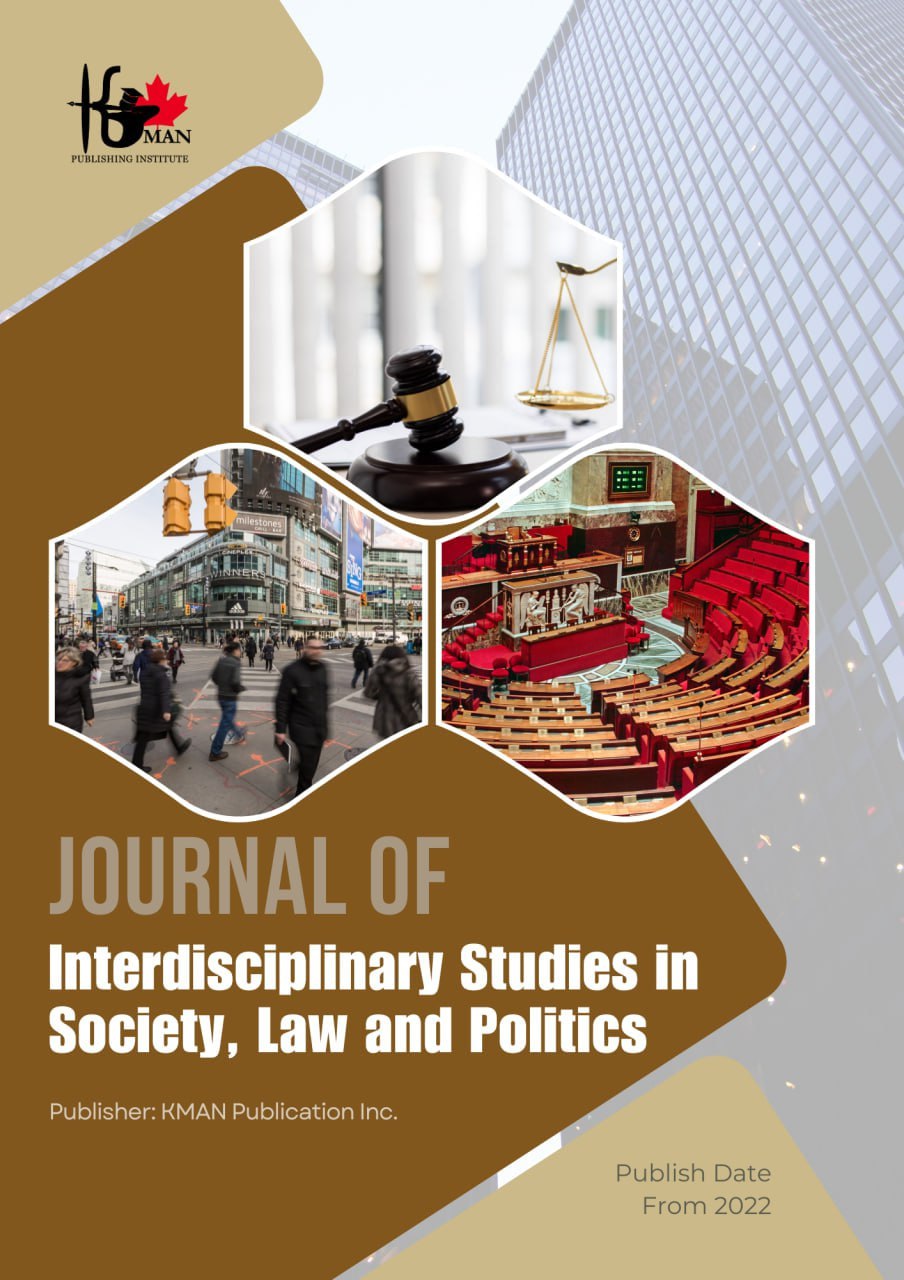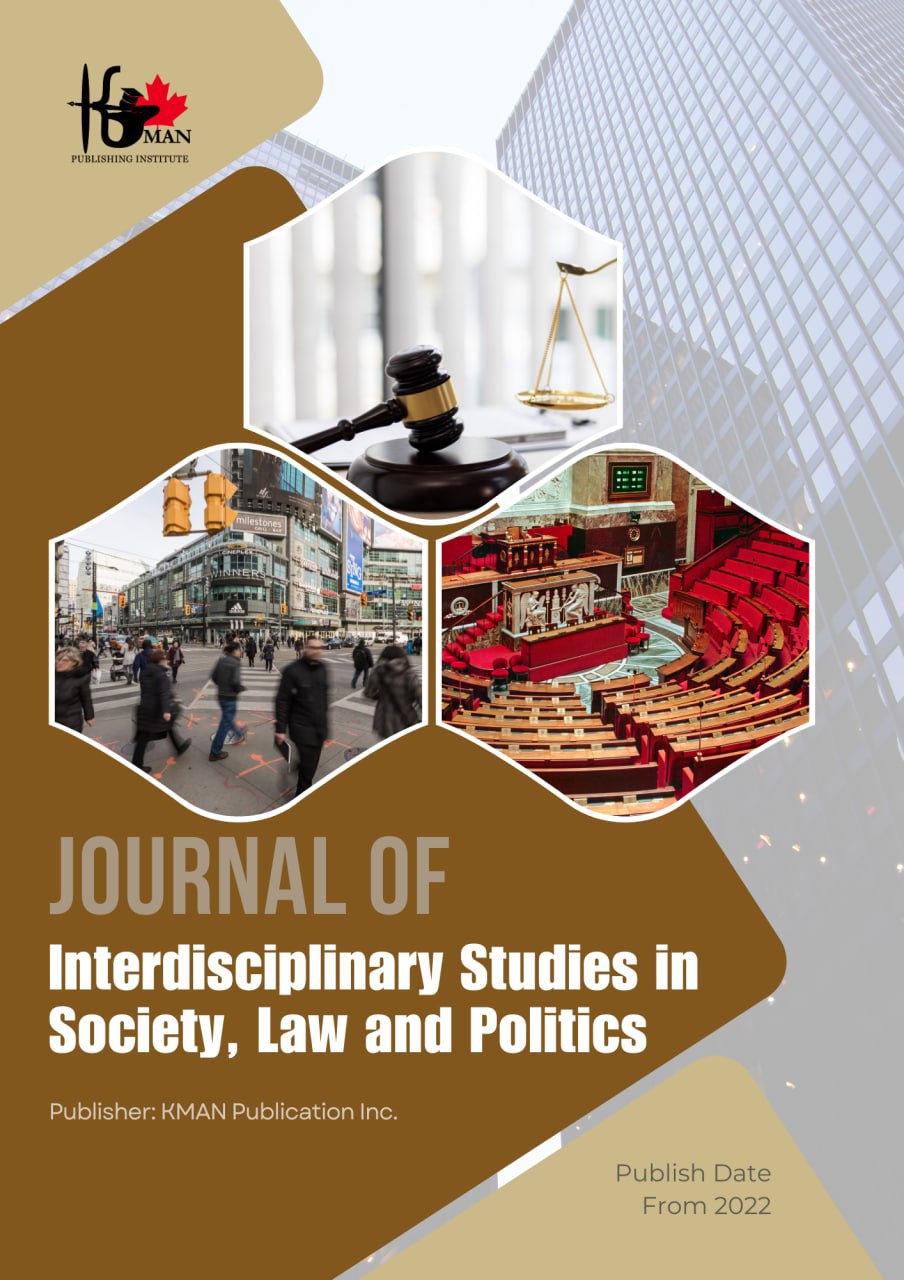Structural Realist Analysis of NATO–Russia Geopolitical Competition in Eastern Europe and the Origins of the Ukraine War
Keywords:
Structural realism, NATO–Russia confrontation, Ukraine War, ontological insecurity, civilizational realismAbstract
This study, drawing on a structural realist analytical approach, investigates the systemic drivers of the NATO–Russia confrontation and its ultimate outcome in the form of the Ukraine War in 2022. Through a combination of comparative historical analysis, process tracing, and discourse analysis, it reconstructs the evolution of threat construction, strategic misperceptions, and entrapment in alliance patterns from the post–Cold War period to the present. The findings indicate that the gradual expansion of NATO, the collapse of geopolitical buffer zones, and the ontological insecurity of Russian elites have intensified a mutually reinforcing security dilemma. By analyzing military doctrines, elite speeches, and strategic documents, this research demonstrates how the erosion of deterrence transparency, the resurgence of securitization, and civilizational discourse have transformed a structural conflict into a military confrontation. In this context, Ukraine, as a patterned buffer state, has become entangled in the spiral of alliance ambiguity and the logic of strategic isolation. Contrary to liberal or constructivist interpretations, this war is not viewed as the result of miscalculations or ideological divergences, but rather as the inevitable outcome of structural transformations in power polarization and the institutional consolidation of alliances. This study highlights the limitations of diplomatic crisis management without structural recalibration of the international system and offers new theoretical insights into civilizational realism and ontological insecurity during periods of multipolar transition.
Downloads
References
Allison, R. (2014). Russian 'deniable' intervention in Ukraine: How and why Russia broke the rules. International Affairs, 90(6), 1255-1297. https://doi.org/10.1111/1468-2346.12170
Atanasov, D. D. (2023). NATO and the EU: Who Has the Main Role in Ensuring Energy Security in Europe? https://repositorio.iscte-iul.pt/bitstream/10071/29760/1/master_dimitar_dimitrov_atanasov.pdf
Averre, D. (2010). From Pragmatisim to Strategic Interest? Russian Policy and the Expansion of NATO. Europe-Asia Studies, 62(4), 679-703.
Bacevich, A. (2020). The Age of Illusions: How America Squandered Its Cold War Victory.
Behnke, A. (2012). NATO's security discourse after the Cold War: Representing the West. https://doi.org/10.4324/9780203109328
Browning, C. S., & Joenniemi, P. (2017). Ontological security, self-articulation and the securitization of identity. Cooperation and Conflict, 52(1), 31-47. https://doi.org/10.1177/0010836716653161
Bruun, S. P. (2023). Beyond Conflict: NATO's Just Securitization of Russia https://www.diva-portal.org/smash/get/diva2:1794165/FULLTEXT02
Cadier, D., & Light, M. (2015). Russia's Foreign Policy: Ideas, Domestic Politics and External Relations.
Charap, S., & Colton, T. J. (2017). Everyone Loses: The Ukraine Crisis and the Ruinous Contest for Post-Soviet Eurasia. https://doi.org/10.4324/9780429031571
Cottey, A. (2007). The European Neutrals and the European Security and Defence Policy. Perspectives on European Politics and Society, 8(3), 345-360. https://doi.org/10.1080/15705850701522455
Delcour, L. (2017). The EU and Russia in their 'contested neighbourhood': Multiple external influences, policy transfer and domestic change. https://doi.org/10.4324/9781315526108 10.4324/9781315644370
Eichler, J. (2021). NATO's Expansion After the Cold War: Geopolitics and International Relations. https://doi.org/10.1007/978-3-030-66641-5_2
Eichler, J. (2023). NATO and the War in Ukraine. https://link.springer.com/content/pdf/10.1007/978-3-031-68779-2.pdf
Flockhart, T. (2020). The coming multi-order world. Contemporary Security Policy, 41(1), 3-30. https://doi.org/10.1080/13523260.2019.1677326 10.1080/13523260.2016.1150053
Fusiek, D. A. (2022). Putin's great patriotic war: Russia's securitization of the West and humiliation narratives surrounding the 2022 invasion of Ukraine. HAPSc Policy Briefs Series, 3(1), 15-25. https://doi.org/10.12681/hapscpbs.30999
Goldgeier, J. M. (1999). Not Whether But When: The U.S. Decision to Enlarge NATO.
Gómez, R. (2015). EU Foreign Policy towards Eastern Partnership Countries: Conditionality and Beyond. In The EU and its Neighbours (pp. 95-111). https://doi.org/10.4324/9781315739546
Götz, E. (2016). Russia, the West, and the Ukraine Crisis: Three contending perspectives. Contemporary Politics, 22(3), 324-341. https://doi.org/10.1080/13569775.2016.1201313
Grieco, J. M. (1988). Anarchy and the Limits of Cooperation: A Realist Critique of the Newest Liberal Institutionalism. International Organization, 42(3), 485-507. https://doi.org/10.1017/S0020818300027715
Grycak, P. (2022). Post-Euromaidan Geopolitical Identity of Ukraine: Between West and Russia. Central European Journal of International and Security Studies.
Haukkala, H. (2015). From cooperative to contested Europe? The conflict in Ukraine as a culmination of a long-term crisis in EU-Russia relations. Journal of Contemporary European Studies, 23(1), 25-40. https://doi.org/10.1080/14782804.2014.1001822
Hjermann, A. R., & Wilhelmsen, J. (2024). Topos of threat and metapolitics in Russia's securitisation of NATO post-Crimea. Review of International Studies, 50(2), 191-210. https://doi.org/10.1017/S0260210524000937
Jacobs, R. T. (2015). Structural Realism and Geopolitics in the Post-Cold War Era. In. ResearchGate.
Jarl, L. (2023). The Discourse on Policy Shifts and NATO-membership https://www.diva-portal.org/smash/get/diva2:1763299/FULLTEXT05
Jeppesen, M. (2002). Partnership and Discord: Russia and the Construction of a Post-Cold War Security Architecture in Europe University of Oslo. https://www.duo.uio.no/bitstream/handle/10852/14725/6685.pdf
Kanet, R. E., & Piet, R. (2014). Shifting European Security Relationships: Russia and the EU After the Cold War. Communist and Post-Communist Studies, 47(3), 375-386. https://doi.org/10.1016/j.postcomstud.2014.10.006
Karlsson, V. (2024). Sweden's Relationship to NATO: How the Government Legitimizes its Foreign Security Policy https://lup.lub.lu.se/luur/download?func=downloadFile&recordOId=9143737&fileOId=9143738
Kazharski, A. (2017). Russia's Civilizational Turn: Towards Post-Western Modernity? Problems of Post-Communism, 64(5), 296-310. https://doi.org/10.1080/10758216.2016.1238254
Kurečić, P. (2020). Ukraine as a Buffer State Between the West and Russia. Journal of Liberty and International Affairs, 6(2), 9-25. https://www.e-jlia.com/index.php/jlia/article/view/285
Kurnyshova, Y. (2024). Securitisation and its extensions: A framework for analysis of Russia's war on Ukraine. European Security, 33(1), 23-47. https://doi.org/10.1080/09662839.2024.2366864
Kyrydon, A., Troyan, O., Lee, D. S., & Lim, S. (2022). Ukraine's Political Identity and Western Integration Unipolar Hangover and American Offshore Leadership: Systemic Causes and Consequences of the Ukraine and Gaza Wars. European Political Science Review, 23(1). https://doi.org/10.14731/kjis.2025.04.23.1.1
Lo, B. (2021). Russia and the new world disorder.
Makarychev, A., & Yatsyk, A. (2021). Civilizational Realism: A New Theoretical Approach to Russia's Foreign Policy. In Routledge Handbook of Russian Foreign Policy. https://doi.org/10.4324/9780429424177-22
Mankoff, J. (2022). Empires of Eurasia: How Imperial Legacies Shape International Security. https://doi.org/10.12987/9780300265378 10.2307/j.ctv2c3k1xd 10.12987/yale/9780300248258.001.0001
Mankoff, J. (2022). Iranian Identity and Iran’s “Empire of the Mind”. 153-168. https://doi.org/10.12987/yale/9780300248258.003.0008
Mearsheimer, J. J. (2014). Why the Ukraine Crisis Is the West's Fault. Foreign Affairs, 93(5), 77-89. https://www.foreignaffairs.com/articles/russia-fsu/2014-08-18/why-ukraine-crisis-west-s-fault
Mearsheimer, J. J. (2022). The Causes and Consequences of the Ukraine War. European Journal of International Security, 7(2), 153-170. https://doi.org/10.1017/eis.2022.1
Menon, R., & Rumer, E. (2015). Conflict in Ukraine: The Unwinding of the Post-Cold War Order.
Murginski, P. (2023). The Survival of NATO in the Post-Cold War Era: A Comparative Analysis of Neorealist and Constructivist Theories. Bulletin of "Carol I" National Defence University. https://doi.org/10.53477/2284-9378-23-05
Nankobe, V. M. (2021). Great Power Politics in Post-Cold War Period: The Ukraine Crisis of 2014 Simon Fraser University. https://summit.sfu.ca/_flysystem/fedora/2022-08/input_data/21487/Great%20Power%20Politics%20Article.pdf
Nato. (2008). Bucharest Summit Declaration.
Noori, A., & Masoudi, H. (2025). Russia's Offensive Defense in the 2022 Ukraine War; Nature and Challenges. Geopolitics Quarterly. https://journal.iag.ir/article_205386_en.html
Peleshenko, A. (2022). Evolution of the Idea of the "Russian Threat" to the Security of the EU and NATO https://dspace.cuni.cz/bitstream/handle/20.500.11956/176907/120429079.pdf
Rácz, A. (2016). Russia's Hybrid War in Ukraine: Breaking the Enemy's Ability to Resist. https://www.fiia.fi/en/publication/russias-hybrid-war-in-ukraine
Raik, K. (2019). EU-Russia Relations in the New Geopolitical Context.
Ratti, L. (2006). Post-Cold War NATO and International Relations Theory: The Case for Neoclassical Realism. Journal of Transatlantic Studies, 4(1), 81-110. https://doi.org/10.1080/14794010608656841
Rumelili, B. (2021). Ontological (In)security and peace anxieties: A framework for conflict resolution. Review of International Studies, 47(1), 53-71. https://doi.org/10.1017/S026021052000044X
Sakwa, R. (2015). Frontline Ukraine: Crisis in the Borderlands. https://doi.org/10.5040/9780755603756
Sakwa, R. (2017). Russia against the Rest: The Post-Cold War Crisis of World Order. https://doi.org/10.1017/9781108182323 10.1017/9781316675885
Sarotte, M. E. (2014). 1989: The struggle to create post-Cold War Europe.
Smith, H. (2020). Russia's New Strategic Doctrine and the Fragmentation of the Post-Cold War Order. The RUSI Journal, 165(1), 50-57. https://doi.org/10.1080/03071847.2020.1736454ER -
Smith, M. A., & Dawson, M. (2022). Russia's War in Ukraine: Military Strategy, Global Implications, and the Limits of Deterrence. Defence Studies, 22(4), 421-445.
Smith, N. R., & Yuchshenko, A. (2021). Realism and the Study of EU-Russian Relations. In Routledge Handbook of EU-Russia Relations. https://doi.org/10.4324/9781351006262-9
Trenin, D. (2014). Russia's Breakout from the Post-Cold War System: The Drivers of Putin's Course.
Tsygankov, A. P. (2013). Russia's Foreign Policy: Change and Continuity in National Identity.
Tsygankov, A. P. (2016). Russia's Foreign Policy: Change and Continuity in National Identity.
Waltz, K. N. (1979). Theory of International Politics.
Wilhelmsen, J., & Hjermann, A. R. (2022). Russian certainty of NATO hostility. Arctic Review on Law and Politics, 13, 45-61. https://doi.org/10.23865/arctic.v13.3378
Downloads
Additional Files
Published
Submitted
Revised
Accepted
Issue
Section
License
Copyright (c) 2023 Mojtaba Sotoude Kashani (Corresponding author)

This work is licensed under a Creative Commons Attribution-NonCommercial 4.0 International License.






